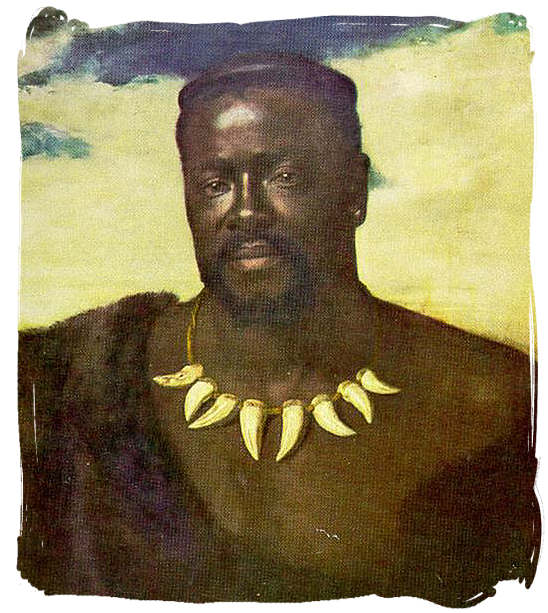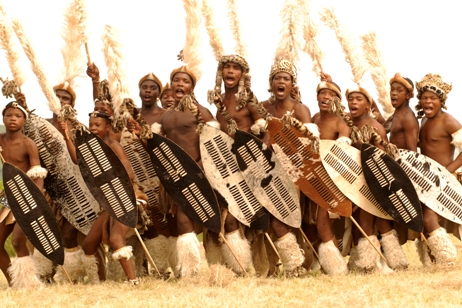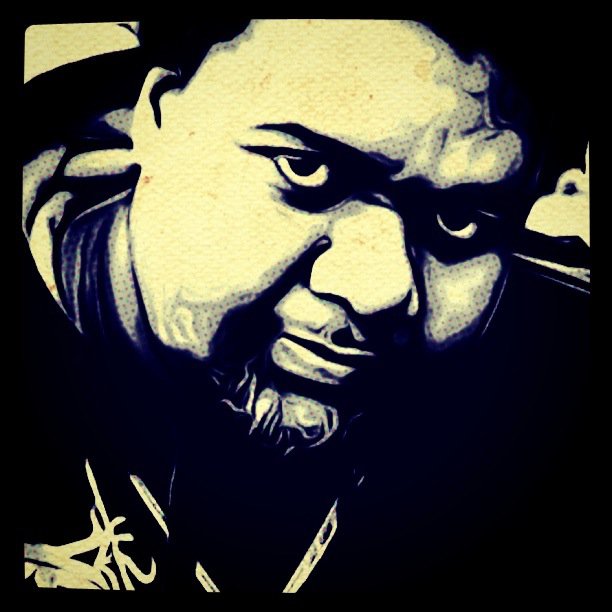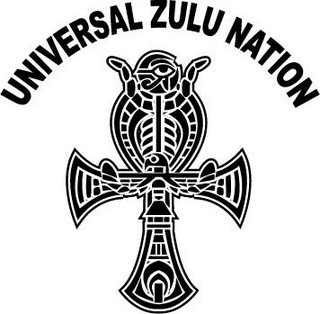THE IMAGES – PREHISTORIC AFRICAN POPULATIONS IN NORTH AND SOUTH PACIFIC: For it to be possible or even likely that there be an African presence in Baja, California, wouldn’t the necessary conditions be large and ancient African populations (even going into the Old Stone Age) bordering the Pacific Ocean in the north and south? There were such populations. See African populations in the Paleolithic, Neolithic, and Bronze Age north and south Pacific.
AFRICAN CAVE ART IN BAJA: Red and black African cave rock paintings of Baja California showing prehistoric presence with possibly having crossed the Bering Straight with Siberian origins from the Upper Paleolithic: click, click. THE LEGEND DISCUSSED:
1) Name California first appears in 16th century contract involving complaint against Cortez.
http://www.beforebc.de/Related.Subjects/Queen.Califia.and.California/CalifiaLink03.htm
2) 1000 ships of Abu Bakari from Africa to North America in 1300 and Cortez’s 300 African sailors to land maps lead him to find.</span>
http://www.beforebc.de/Related.Subjects/Queen.Califia.and.California/Califia04.htm
3) Land at right hand of the Indies.
http://www.beforebc.de/Related.Subjects/Queen.Califia.and.California/Califia05.htm
4) Large population of people of African descent in California and of 44 people who founded Los Angelas, 26 were of African descent.
http://www.beforebc.de/Related.Subjects/Queen.Califia.and.California/Califia06.htm
5) Califia and cave of ships.
http://www.beforebc.de/Related.Subjects/Queen.Califia.and.California/CalifiaAndCaveOfShips.html
6) Search of rumored land of gold spurred Cortez on.
http://www.beforebc.de/Related.Subjects/Queen.Califia.and.California/Califia07.htm
7) Map used by Cortez shows Baja, California as the island he sought.
http://www.beforebc.de/Related.Subjects/Queen.Califia.and.California/Califia08.htm
8) Early 19th century Harvard scholar traces name of California to 15th century novel.
http://www.beforebc.de/Related.Subjects/Queen.Califia.and.California/Califia09.htm
9) Ample evidence that Africans long predated Columbus to the Americas.
http://www.beforebc.de/Related.Subjects/Queen.Califia.and.California/AfricansPredateColumbus-TheAbundantEvidence.html
While the article credits Arab and Islamic exploits to the new world and the naming of countless cities, etc. there is a more salient dimension.
That is that those Arabs were African.
Being African takes precedence over them being Arabic as they were African and had been travelling transatlantically long before Africans became Arabic.
Now, in the title, Ummayyed Caliph Abdul-Rahman III, we find, Caliph which largely transliterates to Califia.
As Africans long frequented the Americas (i.e. check red and black cave art figures above), Califia may have been an African designation in use in the Americas centuries or millenniums before Africans became Arab.
You heard it first here.
Text from 7) above: below, Harvard scholar Joshia Royce omits the fact that Califia was referred to in the book he translates. No matter. It is otherwise an insightful work proving the origins of the name of California state. Baja Peninsula – California’s finger and kingdom of the either real or imaginary African Queen Califia. Humboldt County History
History of Humboldt County California – Historic Record Co., Los Angeles, 1915 CHAPTER I.
The Origin of the Name California
Almost everybody knows that the discussion concerning the name California waxed warm for a number of years. Norton, the author of a recent book on California, tells us it is interesting to note that most school children are familiar with the discussion which has heretofore taken place as to the origin of the name. He says many people are familiar with its alleged formation from two Spanish or Latin words meaning a hot furnace; but unfortunately for the theory that this is the true derivation, it must be remembered that to the early Spaniards who first used the name in connection with the country, California was not a hot country, but in comparison with those through which they had to come to reach it, a cold one. The name first appeared in the written record as applied to Lower (Baja) California in Preciado’s diary of Ulloa’s trip down the coast of that peninsula in 1539. But it is used there as if it were already in common use. And it is probable that it was first given to the country by Cortes or some of his followers either at Santa Cruz or La Paz between 1535 and 1537.
In his History of the New California the author of the present work (Leigh H. Irvine) discusses the origin of the name somewhat at length. He says that Prof. Josiah Royce, of Harvard, Winfield Davis, and other historians, now accept Edward Everett Hale’s conclusion that the name California was derived from an old romance and applied by Cortes to the peninsula he discovered in 1535.
Mr. Hale made his investigations in the year 1862, while reading the old romance entitled “Sergas de Esplandian,” by Garcia Ordouez de Montalvo, the translator of Amidas. In this connection it is worth while to give some of the statements of the eminent Dr. Hale, for there have been a number of theories as to the origin of the name. He says : “Coming to the reference in this forgotten romance to the Island of California, very near to the Terrestrial Paradise, I saw at once that here was the origin of the name of the state of California, long sought for by the antiquaries of that state, but long forgotten, for the romance seems to have been published in 1510—the edition of 1521 is now in existence—while our California, even the peninsula of that name, was not discovered by the Spaniards until 1526, and was not named California until 1535.”
Not long after this discovery Mr. Hale invited the American Antiquarian Society to examine the evidence, and in March, 1864, he translated for the Atlantic Monthly all the parts of the story that relate to the Queen of California (Califia), and in 1873 he published a small volume on the subject, in which he said: “The name California was given by Cortes, who discovered the peninsula in 1535. For the statement that he named it we have the authority of Herrera. It is proved, I think, that the expedition of Mendoza, in 1532, did not see California ; it is certain that they gave it no name. Humboldt saw, in the archives of Mexico, a statement in manuscript that it was discovered in 1526, but for this there is no other authority.
“It is certain that the name did not appear until 1535. No etymology of this name has been presented that is satisfactory to the historian. Venegas, the Jesuit historian of California, writing in 1758, sums up the matter in these words: `The most ancient name is California, used by Bernal Diaz, limited to a single bay. I could wish to gratify the reader by the etymology of the word, but no etymology of the name has been presented that is satisfactory. In none of the dialects of the various natives could the missionaries find the least trace of such a name being given by them to the country, or even to any harbor, bay, or small part of it. Nor can I subscribe to the etymology of some writers, who supposed the name to have been given to it by the Spaniards because of their feeling an unusual heat at their first landing here; but they thence called the country California, compounding the two Latin words califa and fornax, a hot furnace. I believe few will think the adventurers could boast of so much literature.
Clavigero, in his history of California, after giving this etymology, offers as an alternative the following as the opinion of the learned Jesuit Giuseppe Compoi : He believes that the name is composed of the Spanish word cala, which means ‘a little cove of the sea,’ and the Latin fornix, which means ‘the vault of a building.’ He thinks these words are thus applied, because, within Cape St. Lucas there is a little cove of the sea, towards the western part of which rises a rock, so torn out that on the upper part of the hollow is seen a vault, as perfect as if made by art. Cortes, therefore, observing this cala or cove and this vault, probably called this port California or Cala fornix—speaking half in Spanish, and half in Latin. Clavigero suggests as an improvement on this somewhat wild etymology that Cortes may have said Cala Fornax, meaning cove furnace, speaking as in the Jesuit’s suggestion, in two languages.”
Towards the close of this romance of the Sergas de Esplandian the various Christian knights assemble to defend the Emperor of the Greeks and the city of Constantinople against the attack of the Turks and Infidels. In the romance the name appears with precisely our spelling in the following passage:
“Sergas Chapter 157: ‘Know that, on the right hand of the Indies there is an island called California very near to the Terrestrial Paradise, which was peopled with black women, without any men among them, because they were accustomed to live after the fashion of Amazons. They were of strong and hardened bodies, of ardent courage, and of great force. The island was the strongest in the world, from its steep rocks and great cliffs. Their arms were all of gold; and so were the caparisons of the wild beasts which they rode, after having tamed them; for in all the Island there is no other metal. They lived in caves very well worked out; they had many ships, in which they sailed to other parts to carry on their forays.”
The name appears in several distinct passages in the book. Mr. Hale adds :
“This romance, as I have said, is believed to have been printed first in 1510. No copies of this edition, however, are extant. But of the edition of 1519 a copy is preserved ; and there are copies of successive editions of 1521, 1525 and 1526, in which last year two editions were published—one at Seville and the other at Burgos.
All of these are Spanish. It follows, almost certainly, that Cortes and his followers, in 1535, must have been acquainted with the romance; and after they sailed up the west side of Mexico, they supposed they were precisely at the place indicated, ‘on the right hand of the Indies.’ It will be remembered, also, that by sailing in the same direction, Columbus, in his letters to the sovereigns, says : ‘He shall be sailing towards the Terrestrial Paradise.’
We need not suppose that Cortes believed the romance more than we do; though we do assert that he borrowed a name from it to indicate the peninsula which he found ‘on the right side of the Indies, near to the Terrestrial paradise.’ * * * In ascribing to the Esplandian the origin of the name California, I know that I furnished no etymology for that word. I have not found the word in any earlier romances. I will only suggest that the word Calif, the Spanish spelling for the sovereign of the Mussulman power of the time, was in the mind of the author as be invented these Amazon allies of the Infidel power.”
It will be seen that there have been many discussions on the subject, and whether true or false the little romance is now accepted as the most likely explanation of the origin of the word.
Did You Know That California Was Named After a Black Queen?
by Kwaku Person-Lynn, Ph.D
It is well documented that of the 44 people who founded the City of Los Angeles, 26 were of Afrikan descent. What is amazing, and not taught in California schools, the majority of the founders of San Francisco, San Jose and San Diego were of Afrikan descent, or that Orange County, Beverly Hills and Malibu were once owned by people of Afrikan descent. The Picos, Black Spanish speaking brothers, Pio and Andres, the former twice California governor, owned </span><span>San Fernando Valley, Whittier and the Camp Pendleton area.
California is in the media everyday. It is incredible most California residents know nothing about the state being named after a Black Woman.
The genesis of the name begins with a story read by Spanish explorer Hernando Cortez, who conquered Mexico, killed Montezuma, ended the Aztec empire before entering Baja California, continuing his search for gold.
The 17th century best-selling adventure story was written by a Spaniard named Garci Ordonez de Montalvo and published in Seville in 1510. The name of the book was “The Exploits of Esplandian” and it was written as a sequel to the popular Portuguese poem, “Amadis de Guala.”
(Wanda Sabir, San Francisco Bay View).
The following is an excerpt from the epic that inspired Cortez, featuring a nation composed entirely of fierce, powerful, wealthy black women.
“Know ye that on the right hand of the Indies there is an island called California very near to the Terrestrial Paradise, which was inhabited with black women, without a single man among them, and that they lived in the manner of the Amazons. They were robust of body, with strong and passionate hearts and great virtues. The island itself is one of the wildest in the world on account.Their weapons were all made of gold. The island everywhere abounds with gold and precious stones, and upon it no other metal was found” . The commanding Queen Califia ruled this mythical island.
 Conducting an interview with John William Templeton, California historian and author of the four volume set, Our Roots Run Deep: The Black Experience In California started on the journey of digging up the history of Blacks in California through a conversation with a San Francisco radio host.
Conducting an interview with John William Templeton, California historian and author of the four volume set, Our Roots Run Deep: The Black Experience In California started on the journey of digging up the history of Blacks in California through a conversation with a San Francisco radio host.
“I was doing a story on Rodney King for the Mercury News, and while I was down there someone said that a black man used to own the San Fernando Valley. That was Pio de Jesus Pico (1801-1894). And then I found out that he was also the last Mexican governor of California. I didn’t know of any black governors or anything, so I called into the Ray Taliaferro show (on KGO news radio, San Francisico) and said to him, ‘Did you know that there were four black and said to him, ‘Did you know that there were four black governors of the state of California?’ He said, ‘That ain’t nothing, the whole damn state is named after a black woman.”
According to the story, California was an island where only Black women lived, gold was the only metal and pearls were as common as rocks. The women were the most powerful and could be ferocious women in the world. They had beasts that were half men half birds. After mating with men, the women would feed the men to these beasts called griffins. When Cortez arrived in California, searching for this mythical queen, her influence on him was so severe, he paid tribute to this powerful Black woman “Queen Califia” by naming the state after her. California literally means, “the land where black women live”.
Here painting can be found in the state capitol Calfornia Senate building in Sacramento; a mural painted in 1926 by Maynard Dixon and Frank von Sloun in the Hall of the Dons at the Intercontinental Mark Hopkins Hotel in San Francisco; and in all places, a large painting of her resides on the wall of the Golden Dreams building at the Disney California Adventure in Orange County. Unfortunately, on the Great Seal of the State of California, we have Miniver instead of Califia, because Miniver was the Greek goddess who was born full grown, and more acceptable to the Europeans who settled in the state. None of this matters though. At the end of the day, when all the historians and anthropologists attempt to day, when all the historians and anthropologists attempt to
spin this story in another direction, the conclusion will still come down to one dynamic detail: California was named for a Black Woman Queen.
_________________________________________
{ SOURCE : http://www.assatashakur.org/forum/afrikan-reflections/41160-queen-califia-african-mother-namesake-california.html }






























 AKA Cetshwayo kaMpande
AKA Cetshwayo kaMpande










